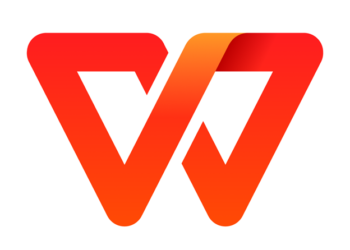Technology is constantly evolving as the years go by. There are very few fields that a technological surge hasn’t benefited. And now, technology has also permeated the education sector and transformed it for good. Education technology aims to bridge the gap between students of different backgrounds and widen their imaginations.
In 2020, the education field was primarily impacted by the pandemic, and the need for Edtech solutions was truly felt. Students and educators worldwide turned to technology and tried to use it to its full potential. Since then, new Edtech trends have been rapidly emerging in the face of this new-found appreciation for education technology.
In this article, we look at some of the top Edtech trends you need to keep an eye out for in 2023. Keep on reading.
What is Edtech?
Before we dive right into what Edtech trends will dominate the industry in the coming year, let us first understand what Edtech is.
Education technology (Edtech) is digital technology intended to improve or facilitate learning and teaching. By merging cutting-edge technological infrastructure and IT resources for its learners, an Edtech startup should be committed to offering innovative learning solutions.
Edtech attempts to incorporate the best of both worlds and provide a phygital experience where students get access to tangible and digital resources simultaneously.
The Importance of Edtech
The importance of Edtech is paramount, and it has become more prominent in recent years. Edtech attempts to remove existing obstacles and ensures that every learner worldwide has access to high-quality educational resources, no matter what background they might belong to. Edtech solutions make it easier for students to grasp a concept better, thanks to incorporating numerous tools and software.
Most importantly, Edtech isn’t only limited to educational institutions but can also be applied to companies trying to educate their employees on different business processes.
Furthermore, using Edtech, learners can understand in ways comfortable for them. Some students are good at listening, while others are more comfortable doing practical tasks. Whatever the necessity, Edtech has the potential to come up with solutions thanks to its versatility, virtual reality experience, and wide-scale accessibility.
Finally, Edtech can tremendously help students with disabilities. Be it a hearing impairment (captions on videos) or a visual impairment (audiobooks), Edtech can help students learn whatever they wish to, as opposed to conventional ways of education.
Edtech Trends to Watch Out For in 2023
What will come next in Edtech as education becomes more digital? What Edtech breakthroughs should we take into account as 2023 approaches?
Here’s a glimpse of what’s to come.
1. eLearning
eLearning is the most popular education trend, and it is only expected to grow in the coming years. Since the COVID-19 pandemic, the potential of eLearning is being explored more, and according to the Research Institute of America, this trend increases retention rates by up to 60 percent. eLearning is a sought-after trend because it lets educators simultaneously teach many students.
Compared to conventional classroom courses, eLearning solutions are also more cost-effective, allowing students with restrictive financial situations to participate. The eLearning industry is anticipated to surpass $1 trillion by 2027. Over the last few years, several platforms have emerged, such as Udemy, Coursera, and Lessonly. These platforms are major players in the industry and partner with big-league universities to bring forward popular and in-demand courses to students.
Some colleges have even started offering their bachelor courses online. Although this industry might face a slowdown once the pandemic’s effects die, it is likely only partially to shut down. Educational institutions want to merge in-person and online classes to magnify their teaching outcomes.
2. Gamification
Gamification is a trend in learning that has been around for a while. Since immemorial, educators have been using games and competitions to make lessons more interesting and rewarding for students. However, the landscape has entirely changed with gamification entering the Edtech industry. Now, students have the opportunity to have game-based solutions in their learning experience, which makes them want to stick around for more.
Minecraft is perhaps an excellent example of this. The game has been used to build stage performances, craft innovative stories and also teach about DNA. Roblox is another example that has made gamification so prominent in recent years. With this game, students can learn game design and programming. Other than these two, there are also platforms like ClassDojo, Knowre, and Socrative.
Gamification has much scope in the marketing industry. But, gamification can have groundbreaking results in the education sector when used correctly. According to BlueWeave Consulting, the education gamification market will increase by 29% by 2027. Undoubtedly, other video games with education as their primary objective will enter the market.
3. Artificial Intelligence and Virtual Reality
Artificial intelligence is making its mark across different industries, and it was only time before it entered the Edtech market. According to Microsoft, 92% of US educators have begun using AI in education, with several considering it a breakthrough. AI helps take personalized learning to the next level.
an excellent example is the language learning app Duolingo. Similar to that is ELSA, another language platform. Apart from these two, there are also platforms like CENTURY Tech. There are now chatbots, too, like AdmitHub, that help students with college admissions and other procedures. There are also AI grading systems that help educators save time.
Virtual reality is also making its way into this field. VR usage increased in 2021 with data visualization and manipulation in 3D. Rather than just watching a video or reading a concept, students can dive deeply into VR to experience that same concept in 3D. The Google Expeditions app is an excellent example of this, using which students can take field trips. Another example is Labster, which offers VR labs for STEM students.
4. Blockchain Technology
Blockchain technology is no longer restricted to cryptocurrencies and has also entered the education industry. Blockchain is a distributed database that enables transactions between two parties without a middleman. Although blockchain is still in its infancy in the education sector, it has already helped identify workable use cases.
Using blockchain, learners and educators can connect with resources and courses. Blockchain helps educators secure various information and documents, such as admission records, attendance, payments, and grades. Using blockchain, learners can get their certificates and diplomas safely. They can also access them and verify them as needed. Furthermore, it also lowers the cost of learning since it automates numerous tedious processes.
By fostering transparency through smart contracts, enhancing accessibility, and motivating learning, blockchain is proving advantageous for the education sector. Some examples are platforms like Gilgamesh, APPII, and Disciplina.
Final Thoughts
Once education and technology are merged, the possibilities become endless. These trends and a few others will dominate the Edtech market next year, so you better watch out. Edtech is a great tool for delivering enjoyable and productive learning and incorporating extra engagement.
Whether you are a learner or an educator, take advantage of these fast-evolving Edtech trends. Appreciating the potential of Edtech also means that it should be used in balance with conventional educational ways. Because using both simultaneously can help the education sector take itself to the next level.
David Prior
David Prior is the editor of Today News, responsible for the overall editorial strategy. He is an NCTJ-qualified journalist with over 20 years’ experience, and is also editor of the award-winning hyperlocal news title Altrincham Today. His LinkedIn profile is here.











































































